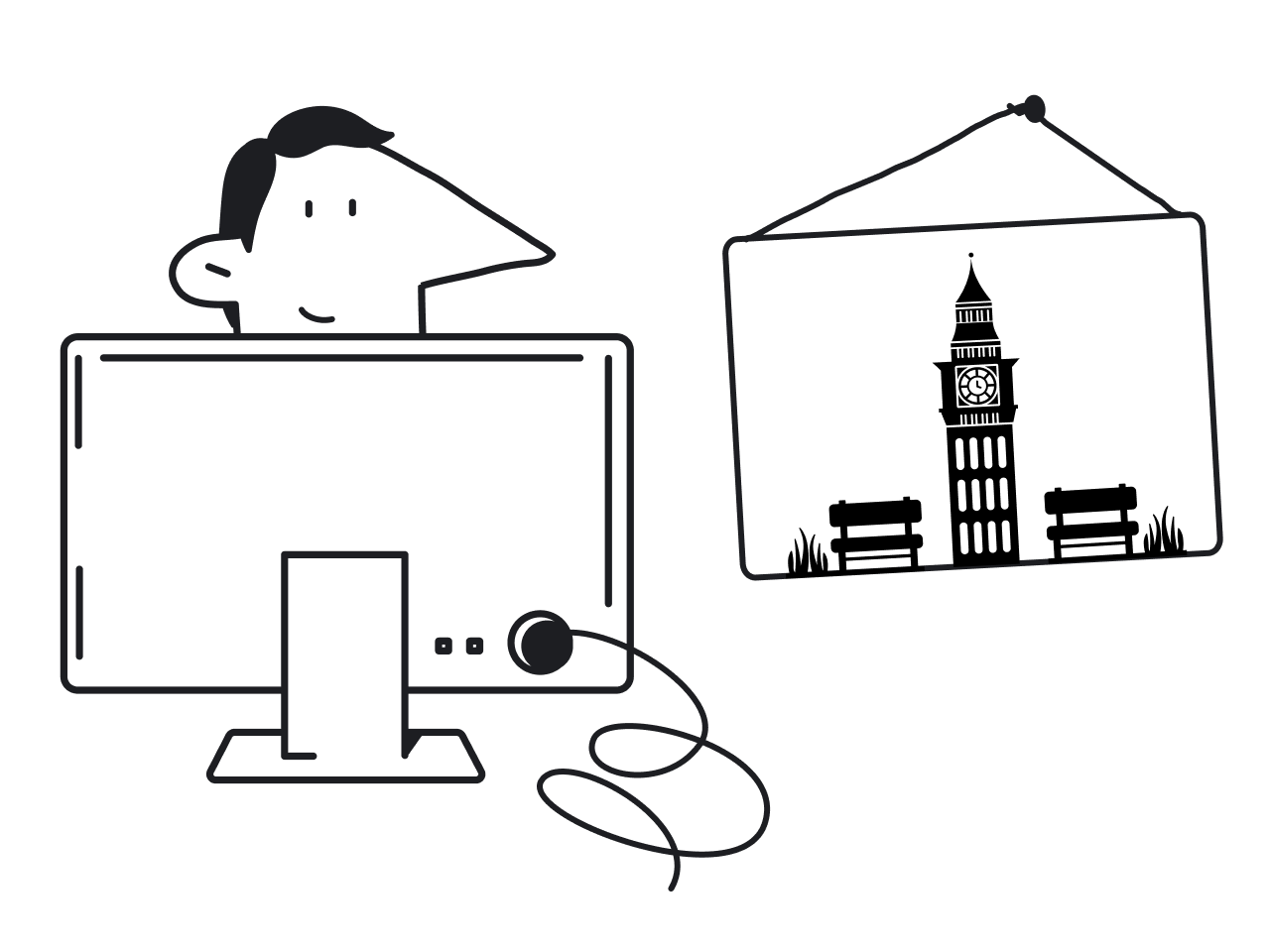What does a typical startup do when they get enough funding to hire some new team members? Right, they scale team as much as possible. It looks like a sign of success and growth, but it also brings a lot of frustration.
Naturally, managing many people is much harder. But apart from that, there is an inherent flaw in big teams. They work less efficiently when they increase. Team x2 in size is expected to deliver x2 more, but it doesn’t.
Scaling is the startupper's dream, and also one of the biggest challenges. Our design agency has grown more than twice in the last two years. Still, when working with clients, we never throw a team of ten designers on one project. We follow the rule of small teams. This text will explain to you the scientific evidence behind this decision.
So, why do we still scale teams if this doesn’t work? Because we can. But why it doesn’t work and what can be done instead? We have a few more paragraphs on that.
Research evidence on team size
Have you ever had that feeling when you are in a big team doing the same amount of work that three people could do even faster? And what if I told you that this phenomenon is real and data-proven?
The phenomenon of people doing less in big teams has a beautiful name “social loafing”. It is believed that the reason behind it is that people feel less personal responsibility.

It is quite surprising that bigger teams are not more productive than smaller ones. What is even more surprising is that there was a guy who decided to run a real experiment to prove this.
1913, Ringelmann effect
His name was Maximilien Ringelmann, and his experiment studied teams of people pulling rope. It turned out that people in smaller teams were doing more effort than the same people in bigger teams. Being a part of a bigger team, they rely on others and feel less responsibility for the final result.

The first experiment took place in 1913, and since then, many other studies on team efficiency were conducted. I’ll tell you briefly about the most notable ones.
1974, Alan Ingham tried to replicate the pulling rope experiment.
What happened:
Some of the team members were instructed to just pretend to pull the rope. Other teams were all pulling, like in Ringelmann’s experiment.
What does it mean?
It proved Ringelmann’s results and tried to explain what causes social loafing. Motivational loss is likely to be the cause, while problems of incoordination do not affect the situation.
1979, Bibb Latané proved that the cause was in individual, not group dynamics
What happened:
People wore blindfolds and soundproof headphones and were asked to shout loudly. Those who believed they were shouting alone, were louder than others. When they thought they were shouting together with someone else, they did only 82% of the sound, and when they thought they were in larger teams, their effort lowered to 74%.
What does it mean?
According to the authors of the experiment, it was the decrease in social pressure that made people work less. As they said, “If the individual inputs are not identified the person may work less hard”.
1975, Brook’s Law
Based on observations by Fred Brooks, adding a new person to a project that is running late, will result in further prolonging of the project delivery.
What does it mean?
- Each new person takes a while to get into the work process (“ramp up” time). Some team member(s) have to spend a certain amount of their time on that.
- Scaling team increases communication overhead. There have to be more chats, emails, calls, and so on.
1993, Collective Effort Model (CEM) by Karau and Williams
This study brought a formula that models social loafing.

What they found?
- Categories that loaf less: women and people from Eastern cultures
- When other team members are expected to do good job, people tend to loaf more
- When teams consist of people who know each other, loafing decreases. In highly valued groups, there is no loafing at all
2005, Social loafing in dispersed teams, Laku Chidambaram and Lai Lai Tung
What happened?
Undergraduate business students were pretending to be a board of directors of a winery and solve a problem all together. The teams were of four to eight people, some were sitting at a table while others were dispersed and communicated online.
What they found?
- In smaller teams, it was more likely that each member gets to participate in group discussion
- In the teams sitting in one room, members felt social pressure to look busy even if they were not (yeah, we didn’t need a study to learn that).
1999, Naoki Kugihara, gender in social loafing (Japan)
What happened?
Participants were pulling the ropes attached to the ceiling. Those who did it individually, were pulling harder than those who believed that only the group power, but not that of the individual, is being gauged.
What they found?
- 40% more men were loafing compared to women.
1989, Christopher P. Earley, loafing in different cultures
What happened?
48 managerial trainees belonging to individualist cultures (in this case, the United States) and the collectivist culture (in this case, People’s Republic of China) worked on an in-basket task (a common task used to test managerial abilities).
What they found?
- Social loafing among representatives of collectivist culture was less than that of individualist
- Collectivist thinking reduces social loafing (not being Chinese). Those Chinese who had individualist thinking did loaf.
2011, Relational Loss
Relational loss, a concept introduced by Jennifer Mueller, describes a situation when
“an employee perceives that support, help, and assistance are less available within the team as team size increases”.
What happened?
The study included 212 professionals from 26 cross-functional design teams working in real companies.
What they found?
- The optimal team size depend on the nature of the group task.
- Team size does significantly and negatively relate to individual level peer-rated performance as well as team-leader rated performance.
2012, Team scaling fallacy or Lego study, by Staats, Milkman, and Fox
What happened?
Groups of 4 and 8 people had to complete a figure of Lego blocks. Other students were asked to estimate the time that teams would need for construction.
What they found?
- Teams of 4 people constructed figures 35% faster than those of 8 people
- Team scaling fallacy exists: people estimate that bigger teams are more effective

2019, Another Lego study, Monechi, Pullano, and Loreto
What happened?
Teams of people created artworks from Lego blocks. Apart from the construction time, dynamic network of social interactions, and the interaction patterns between the participants and the artworks were studied.
What they found?
- Big teams work faster
- Higher commitment leads to higher growth rates
- A certain number of weak ties in the social network of creators maximizes the growth rate
- Creative work is different from other tasks. Building artworks is not the same as pulling rope.
So what is the essence that we can take out of all these studies? Do they just mean that hiring an extra person will make all the team less productive?
No. In product design, we don’t pull ropes and don’t construct LEGO. The tasks are more diverse, creative, and complex. That’s why we can’t project directly all these studies on product design.
Yet, the main takeaway of these experiments is that: social loafing does exist and it’s not always logical. More workers don’t mean that more work will be done.
Applied to the product design team, we can distill a few recommendations on scaling your team wisely:
- Make all the responsibilities and tasks distributed clearly. People didn’t shout that loud when others were shouting, but what if you tell them that other team members will make the beat and blow the horn? They would know that they are the only one responsible for shouting.
- Show that every team member matters. As a team lead, pay attention to every individual and their performance. People work better when they know that their input is recognized and appreciated.
- Define performance indicators that would measure individual performance and not only team results. Clear KPIs naturally leave little space for loafing.
These rules should be the basis of the team organization practices. If you are looking for more tips, check our article How to manage a design team: 5 tips based on true stories.
How big companies scale product teams
As simple as it gets, many of them just decrease team size. Amazon follows two-pizzas rule, which means that each team should have a number of people who can be fed with two pizzas. Starbucks sets limited team size to fight loafing. To find out how Spotify and Airbnb experiment with team productivity, read our article on product development team structure.
How do we solve the issue of scaling design teams?
Eleken designers are not just an outsource force. We call our model of work “team extension”. What does this mean? One or a few of our designers join client’s product team for the amount of time needed to finish the project.
How does this approach help to prevent loafing?
- The communication is smooth. There is no intermediary like account manager. Designers communicate directly with the team and report to them regularly.
- Designers are well engaged in the process because they work on one project exclusively. They don’t have to switch between different topics, as it often happens in agencies.
- Team size doesn’t allow much space for loafing. There is a bunch of small and big projects in our portfolio, but in none of these projects we had more than three or five designers working on one project at the same moment. Typically, it is just one or two.
Over the years of remote work, we have developed guidelines for onboarding and communication processes. To get pro tips from our experience, read our article about designing with remote teams.
To sum up
You can’t trust those who tell you about the benefits of scaling. Bigger teams are not just “harder to manage”. There is a number of issues on different levels — starting with basic human psychology. Social loafing is in the nature of most people, and desire to scale is in the nature of most startupers.
When you want to scale your business, it doesn’t mean that scaling process should necessarily involve team growth. Always remember that this is not the only way. There are many alternatives like outsourcing and team extension. Get in touch to find the best option for you!





.webp)


.png)




